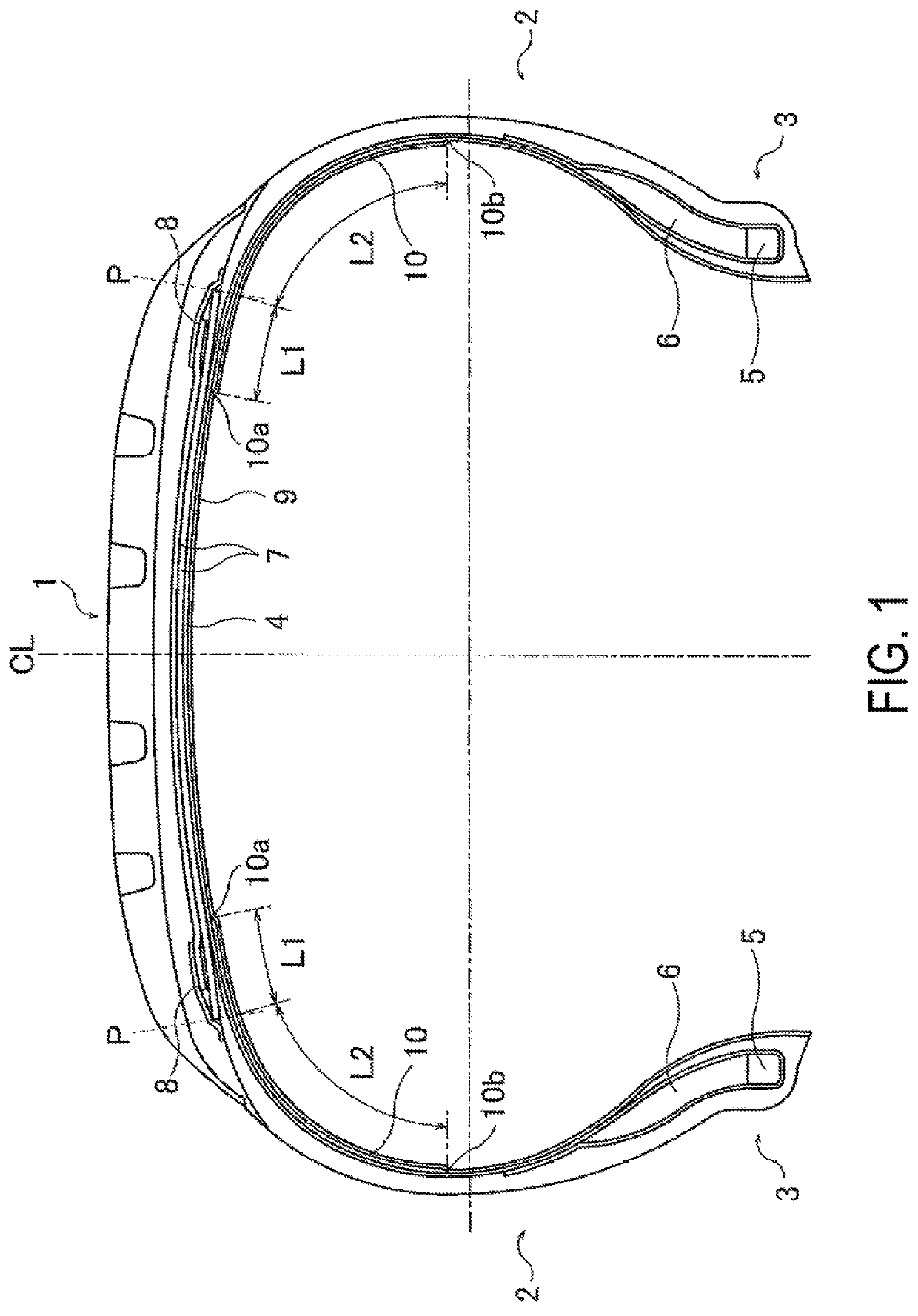Pneumatic tire
a technology of pneumatic tires and pneumatic cylinders, which is applied to tire sidewalls, vehicle components, and without separate inflatable inserts, etc., can solve the problems of limited and insufficient reduction effect of tire weight, and achieve the effect of reducing tire weight, maintaining air permeation preventive properties, and good compatibility
- Summary
- Abstract
- Description
- Claims
- Application Information
AI Technical Summary
Benefits of technology
Problems solved by technology
Method used
Image
Examples
examples
[0026]Fifty six types of pneumatic tires according to Conventional Example 1, Comparative Examples 1 to 11, and Examples 1 to 44 were manufactured to have a tire size of 195 / 65R15, a basic structure illustrated in FIG. 1, and a structure of a tie rubber layer, a length of intrusion L1 from a perpendicular line P extending from the outermost edge of belt layers in the tire lateral direction through an inner liner layer toward a tire equator of each partial tie rubber layer, a length of protrusion L2 from the perpendicular line P of the belt layers toward a bead portion of the partial tie rubber layer, a periphery length L3 of the partial tie rubber layer, a hardness of the rubber composition of the partial tie rubber layer, and a rubber thickness T of the partial tie rubber layer as specified in Tables 1 to 5.
[0027]In the “Structure of tie rubber layer” fields in Tables 1 to 5, a full tie rubber layer is indicated as “full” and a partial tie rubber layer is indicated as “partial”. In...
PUM
| Property | Measurement | Unit |
|---|---|---|
| length | aaaaa | aaaaa |
| length | aaaaa | aaaaa |
| length | aaaaa | aaaaa |
Abstract
Description
Claims
Application Information
 Login to View More
Login to View More - R&D
- Intellectual Property
- Life Sciences
- Materials
- Tech Scout
- Unparalleled Data Quality
- Higher Quality Content
- 60% Fewer Hallucinations
Browse by: Latest US Patents, China's latest patents, Technical Efficacy Thesaurus, Application Domain, Technology Topic, Popular Technical Reports.
© 2025 PatSnap. All rights reserved.Legal|Privacy policy|Modern Slavery Act Transparency Statement|Sitemap|About US| Contact US: help@patsnap.com


